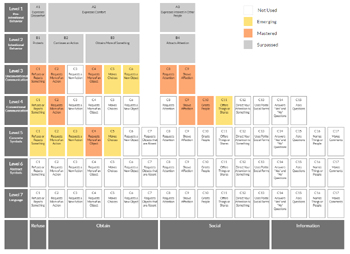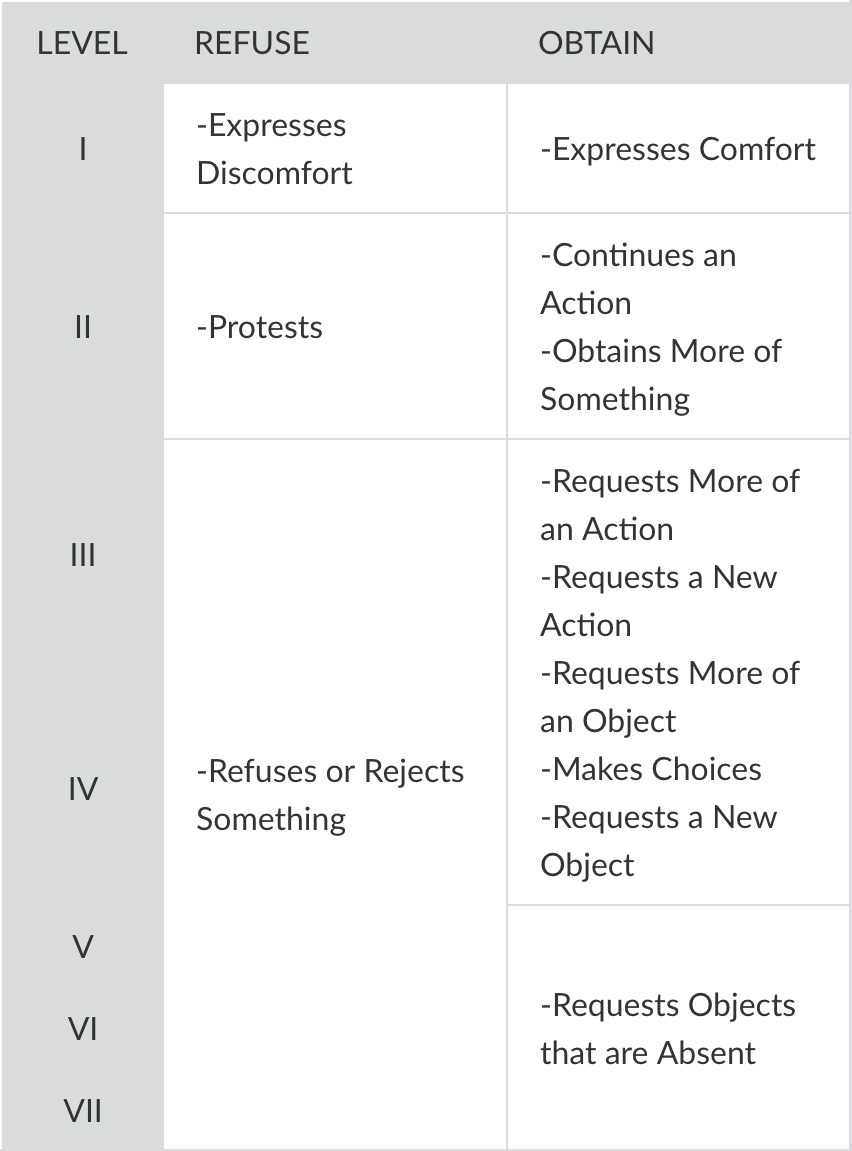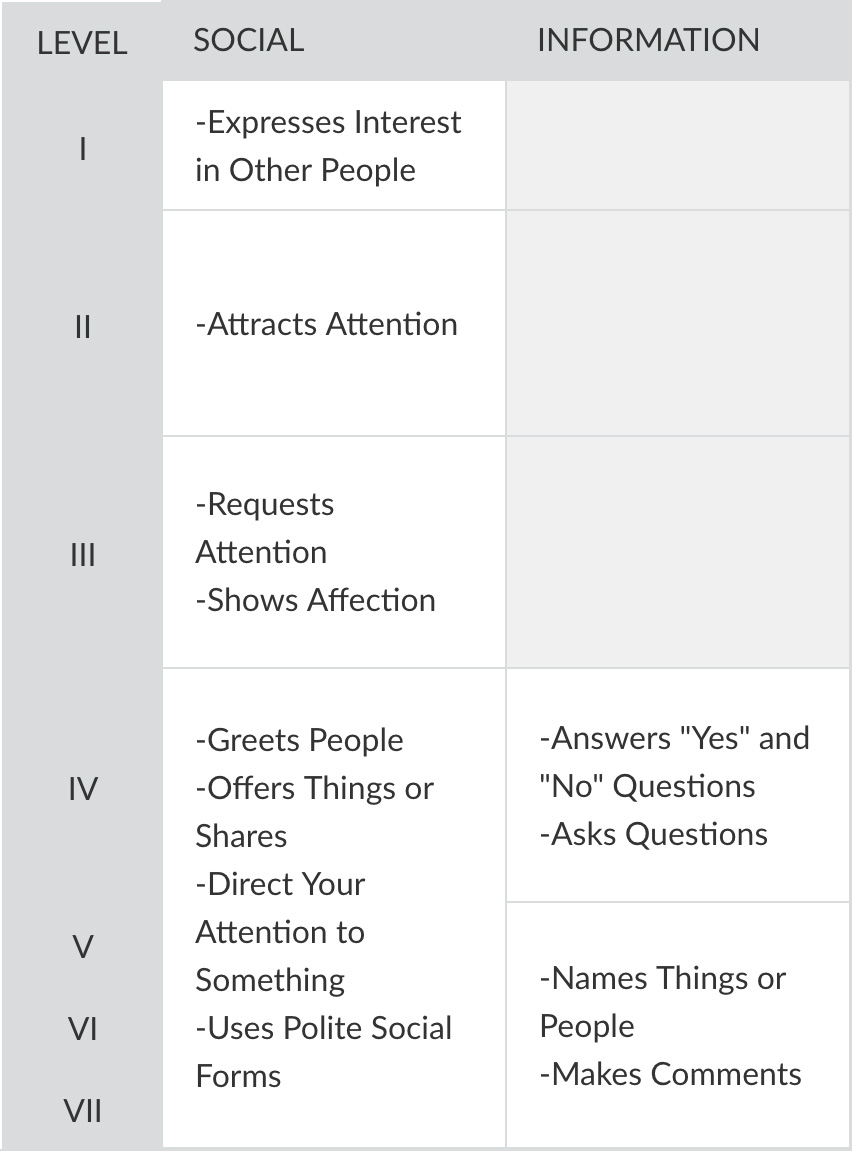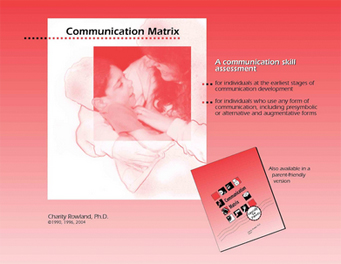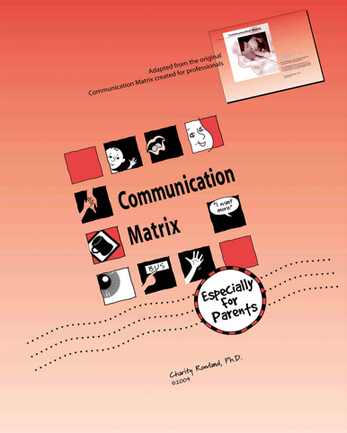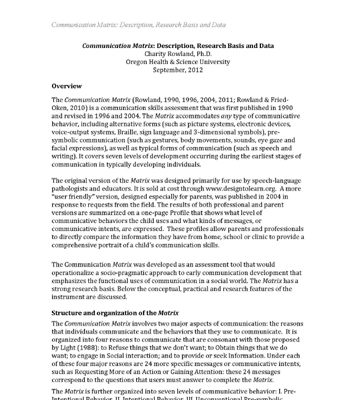Item 1
1. Pre-Intentional Behavior
Behavior is not under the individual’s own control, but it reflects his general state (such as comfortable, uncomfortable, hungry or sleepy).
Caregivers interpret the individual’s state from behaviors such as body movements, facial expressions and sounds. In typically developing children, this stage occurs between 0 and 3 months of age.
Item 2
Behavior is under the individual’s control, but it is not yet used to communicate intentionally. Individuals at this stage do not yet realize that they can use their own behaviors to control another person’s behavior.
Caregivers interpret the individual’s needs and desires from behaviors such as body movements, facial expressions, vocalizations and eye gaze.
In typically developing children, this stage occurs between 3 and 8 months of age.
Item 3
INTENTIONAL COMMUNICATION BEGINS HERE.
Unconventional pre-symbolic behaviors are used intentionally to communicate. Communicative behaviors are “pre-symbolic” because they do not involve any sort of symbol; and they are "unconventional" because they are not socially acceptable for us to use as we grow older.
Communicative behaviors include body movements, vocalizations, facial expressions and simple gestures (such as tugging on people).
In typically developing children,this stage occurs between 6 and 12 months of age.
Item 4
Conventional pre-symbolic behaviors are used intentionally to communicate. Communicative behaviors are “pre-symbolic” because they do not involve any sort of symbol; they are “conventional" because they are socially acceptable and we continue to use them to accompany our language as we mature. The meanings of some gestures may be unique to the culture in which they are used.
Communicative behaviors include pointing, nodding or shaking the head, waving, hugging, and looking from a person to a desired object. Some vocalizations may also be used at this stage. Note that many of these gestures (and especially pointing) require good visual skills and may not be useful for individuals with severe vision impairment. In typically developing children, this stage occurs between 12 and 18 months of age.
Item 5
SYMBOLIC COMMUNICATION STARTS HERE
“Concrete" symbols that physically resemble what they represent, are used to communicate. Concrete symbols look like, feel like, move like, or sound like what they represent. Concrete symbols include pictures, objects (such as a shoelace to represent "shoe"), "iconic" gestures (such as patting a chair to say "sit down"), and sounds (such as making a buzzing sound to mean “bee”). Most individuals skip this stage and go directly to Level VI. For some individuals concrete symbols may be the only type of symbol that makes sense to them; for others they may serve as a bridge to using abstract symbols.
Typically developing children use concrete symbols in conjunction with gestures and words, generally between 12 and 24 months of age, but not as a separate stage.
Item 6
Abstract symbols such as speech, manual signs, Brailled or printed words are used to communicate. These symbols are “abstract” because they are NOT physically similar to what they represent. At this level they are used one at a time.
In typically developing children, this stage occurs between 12 and 24 months of age.
Item 7
Symbols (concrete or abstract) are combined into two- or three-symbol combinations ("want juice", "me go out"), according to grammatical rules. The individual understands that the meaning of symbol combinations may differ depending upon how the symbols are ordered.
In typically developing children, this stage begins around 24 months of age.
